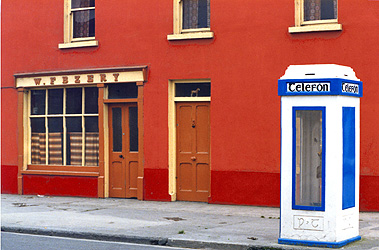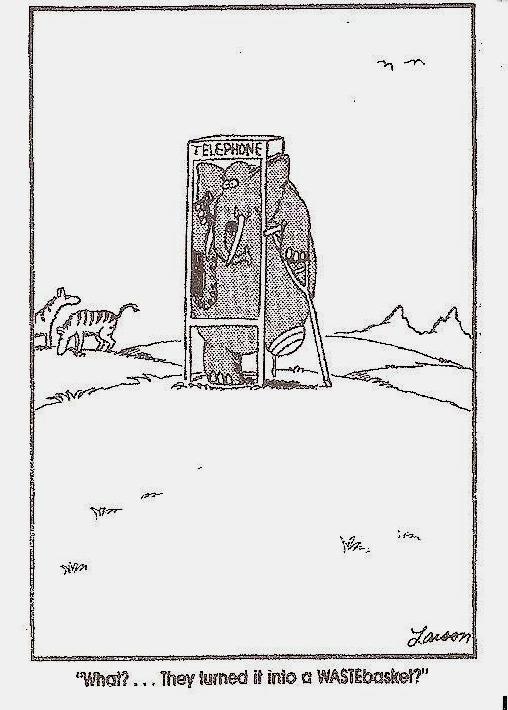 Irish Eyes
Irish Eyes
By
Mattie Lennon
Hello
The US presidency is a Tudor monarchy plus telephones.
(Anthony Burgess)
The day of the familiar Irish phone box is drawing to a close. Earlier this year the powers-that-be decided to reduce the number of post boxes from 4,850 to 2,699. Since usage of the public phone has fallen by 80% in the past five years, how long before the total demise of the phone box? The ****Kiosk, especially in rural areas, provided a valuable link with the outside world. But, in the words of Clinical Psychologist, Marie Murray, “ What of their psychological significance rather than their utilitarian worth? What role did they play in the lives of people? What privacy did they afford, away from the home telephone for those lucky enough to have a telephone in the house but unfortunate enough to have no privacy using that instrument at home?” Dr. Murray goes on to say that phone boxes , “ will become but quaint memories of an older generation regaling their grandchildren with tales of trysts at the local telephone box or romance conducted through whispered confidences in that semi-private box in the middle of the village or at the end of the road . . . ”
In the days when one went through the Operator there was the story of the Cavan man who phoned his friend looking for the loan of a tenner only to be told, “It’s a bad auld line, I can’t hear you.” When the request was repeated it was, once again, met with,“ I can’t hear you”. At this stage the Operator cut in with, “I can hear him perfectly”. The answer was ready, “You give him the loan of the tenner, so.”
The first “public” phone in our area was in the Post Office in Lacken where most of the calls were to the Priest, the Guards, the Doctor, the Vet or The A.I. man (or “the collar-and-tie-bull” as he was known.) The Post Office was also a shop which opened late so nocturnal communications pertaining to illicit relationships could sometimes be conducted, albeit in whispered tones. (Or so I’m told.)
Lacken eventually got a Phone-Box and conversations could be carried out in a stentorian voice without fear of “ear-wigging.” Some “coins” used were not Legal Tender (or even legal.) Washers of a certain diameter and “push-outs” from galvanised junction-boxes, used by electricians, would suffice. (Or so I’m told.)
By “tapping out” the numbers on the top of the cradle (1,9 and 0 were free) one could get through to any number. (Or so I’m told.)
When Decimal-Currency was introduced in 1971 it took a while to have the Phones adapted. The new Decimal 1P coin was exactly the same size as the old sixpence and worked very well. (Or so I’m told.)
Another favourite trick was to block the return-chute with a piece of rolled up twine and to return for the proceeds when a number of people had pressed “Button B” without getting any refund. (Or so I’m told.)
Nowadays when I hear the Dublin joke, “What do Northside girls use for protection? A Phone-box”, it reminds me that at times in rural Ireland the Phone-box was often utilised for erotic pelvic activity while parallel with the perpendicular. (Or so I’m told.)
When a not-too-well-liked person would be retiring it would be said, “They’re holding his retirement do in a phone-box”.

On one occasion, in a neighbouring parish, a female who was presumed to have contracted a “social disease” used the phone and civic-minded local woman immersed it (the phone, not the female caller) in a bucket of Jeye’s Fluid. This caused a malfunction which the P&T engineer couldn’t find a cause for. A local wag said, “you were poxed to get it workin’ agin.”
When Mobiles were getting plentiful and it looked like the humble Phone box would soon be redundant I made a suggestion to Eircom as to the possible utilisation of same . . as Condom-Dispensers. And I even had an idea for cost cutting in the area of signage; by using some of the existing logos and slogans. For instance; wouldn’t the Eircom logo, with very slight modification, look remarkably like a rolled-up condom? And where would you leave slogans like, “Let your fingers do the walking”.
Do you think they acknowledged my suggestion? The didn’t even phone me.
When the story broke, that the phone box was about to be consigned to history, True Films a Dublin based company (www.truefilms.tv) decided to make a film about its passing.
~ ~ ~ ~ ~ ~ ~ ~
Director Ross Whitaker told me, “My colleague Aideen O ‘Sullivan and I were working for a television company together and Aideen starting telling me about how she'd read in the paper that many of the phone boxes around the country were to be removed. It sparked a discussion among us and our workmates where we all recounted stories that we'd heard about phone boxes. There seemed to be so much to say about them. A few days later I saw that the Irish Film Board had a call-out for ideas for short documentaries. I got on the phone to Aideen and we decided to draw up a proposal. The Film Board liked it and eventually, after presenting the idea to them at a meeting, we were commissioned to make it.”
The crew travelled the length and breath of the country interviewing people and were well pleased with the result. Ross says, “I love the stories that we heard while making the film. The funniest is told by a man from Donegal about two ladies who get stuck in the phone box, although the humour comes as much from the way he tells it.” He is anxious to point out that theirs is not a campaign, “ It's not our aim to start some kind of revolutionary movement to counteract their removal. We just want to capture some of the memories that people have of them before they disappear completely.”
The film is called “Bye Bye Now” and the first screening will be in the Cork Film Festival in early November.
So, they next time you see an equilateral rectangle of concrete, in the middle of nowhere, which looks like a square cut from a disused aerodrome, think again. Since the first Irish phone box was installed, in Dawson Street, Dublin in 1925 (it’s still there) such little platforms were witness to emotion-charged messages to and from around the world.
Click on author's byline for bio.

|